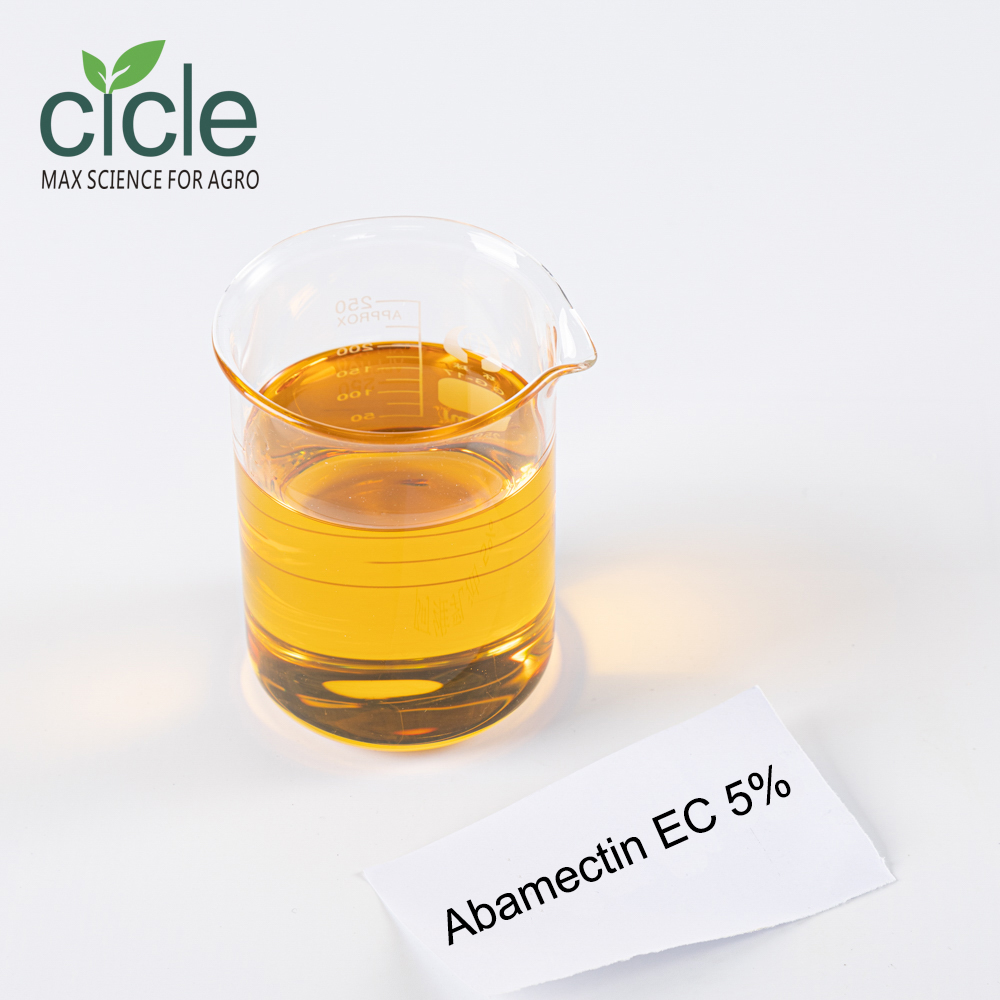
Biopesticide--Avermectin
Other names: Acaridin, Qiamectin, Hujimier, Cedoxin Features of Abamectin: Abamectin is a macrolide disaccharide compound. Abamectin is a natural biopesticide isolated from soil microorganisms. It has contact and stomach poisoning effects on insects and mites, and has a weak fumigation effect without systemic effects. However, it has a strong penetrating effect on the leaves, can kill pests under the skin, and has a long residual effect. Its mechanism of action is different from general insecticides in that it interferes with neurophysiological activities, stimulates the release of γ-aminobutyric acid, and γ-aminobutyric acid has an inhibitory effect on the nerve conduction of arthropods, acarids, nymphs and insects The larvae will appear paralyzed after being in contact with the medicine, do not move or eat, and die after 2-4 days. Its lethal effect is slower because it does not cause rapid dehydration of the insects. Although it has a direct killing effect on predatory and parasitic natural enemies, it does little damage to beneficial insects because there are few residues on the plant surface. The drug has a good control effect on pests and mites resistant to organophosphorus, pyrethroid and carbamate pesticides. Preparations: 1.8% EC, 2% EC, 3% EC, 5 EC, and with chlorpyrifos, pyridaben, phoxim, imidacloprid, fast mite, hexythiazox, lambda-cyhalothrin, monosultap, etc. Combination of ingredients. Abamectin control targets: citrus leaf miner, red spider, rust tick, swallowtail butterfly, poisonous moth, aphid, psyllid; litchi gall mite, red spider; grape spider mite, leaf miner, root-knot nematode; peach small Pests such as pod worms and small pod worms. How to use Abamectin: 1. Citrus pests: citrus leafminer, during the eclosion period of adult leafminers or 3-7 days after the shoots are released, when the new shoots are 5-10 mm long, spray with 2000-4000 times dilution of 1.8% EC for control. For citrus red spider mite, when there are 2~5 mites per leaf, spray with 2000~4000 times dilution of 1.8% EC, or add 200~300 times of 95 Engine oil emulsion or 90% diesel emulsion, the effect is better. Rust wall, in the early stage of rust wall, spray with 4000~8000 times dilution of 1.8% abamectin emulsifiable concentrate to prevent and control. For citrus aphids, in the early stage of aphid occurrence, spray with 1.8% EC 2000~3000 times to control. For citrus psyllids, at the early stage of nymph occurrence, spray with 2000-3000 times of 1.8% EC for control. Citrus swallowtail and poisonous moth, in the young larval stage, spray with 1.8% EC 2000~3000 times to control. 2. Litchi gall mites: Spray with 1.8% EC 4000~5000 times before litchi flowering or early fruit stage gall mites damage. 3. Grape pests: spider mites, spray 1.8% emulsifiable oil 3000~5000 times in the early stage of nymphs. For the leafminer, grasp the adult moth stage, and use 1.8% abamectin EC 3000~5000 times liquid to spray in time to control the adults and prevent the adults from laying eggs. Adults mainly lay eggs on the back of leaves, and should be sprayed on the back of leaves. Or spray pesticides to prevent and control larvae when the hazards first appear, and spray 2 or 3 times continuously to prevent and control larvae. For root-knot nematodes, use 3000-5000 times of 1.8% abamectin EC to irrigate the roots during the suitable control period. 4. Insect pests of peaches and plums: Spray with 3000~4000 times of 1.8% emulsifiable oil in the early stage of larvae hatching for peach borer, plum borer and other borer pests. Precautions for using Avermectin: ① Protective measures should be taken when spraying pesticides, such as wearing a mask. ②It is highly toxic to fish and should avoid polluting water sources and ponds. ③Toxic to bees, do not apply it during the flowering period. ④ The last spraying is 20 days from the harvest period.
If you have any needs for Plant Growth Regulators, Biostimulants, biopesticide, etc., please feel free to contact us.



